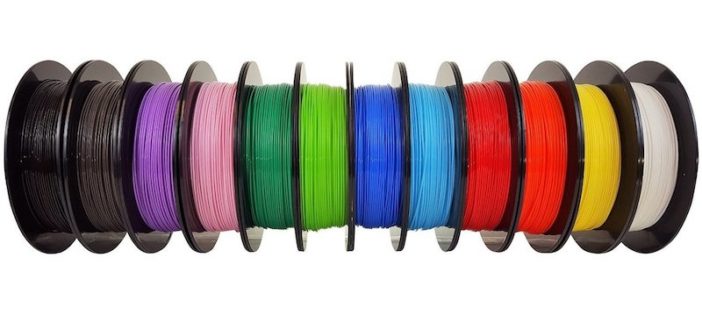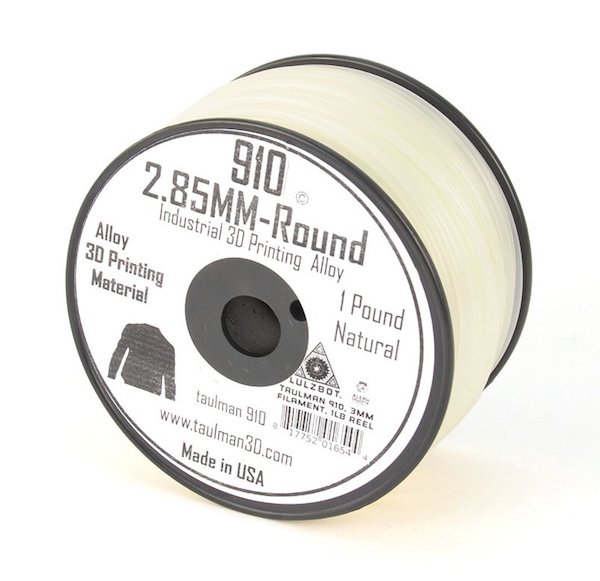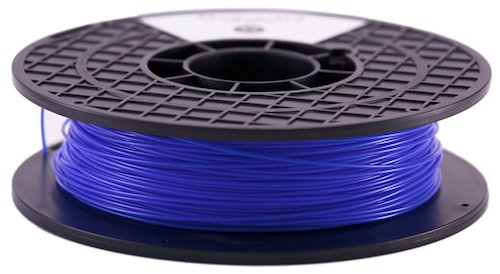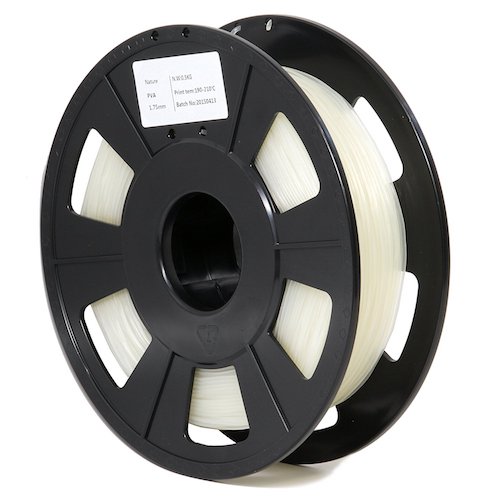If you’re new to 3D printing, there’s plenty to learn without being confused by the huge variety of filaments available. To make life easier, this guide will teach you about the most common 3D printing filaments and how to use them.
What are 3D Printing Filaments?
Filaments are threads of various materials used to feed 3D printers. Each has its own set of properties, including gauge, resilience, temperature of extrusion, and more. Typically, filaments come in either 1.75mm or 3mm gauges. Though there is little inherent difference using either gauge of filament, it’s important to use the proper filament diameter for your machine.
Other features are dependent on the material being used, and will be described in the section below along with the most common 3D printing filaments. Be sure your 3D printer can use your desired materials, that it can reach the required temperatures, and that it doesn’t need a special brand of filament.
Varieties of 3D Printing Filaments
PLA
PLA is one of the two most commonly used filaments. It’s biodegradable, making it good for the environment but it’s not necessarily the most durable material. It has a number of upsides, including its low 190-210C melting temperature. This means it also doesn’t require a heated printing plate, and creates solid bases and sharp corners without warping. PLA is less flexible and more brittle than other choices.
PLA can be mixed with many other materials, like wood, iron, bronze, and more to make more durable prints with varietal finishes.
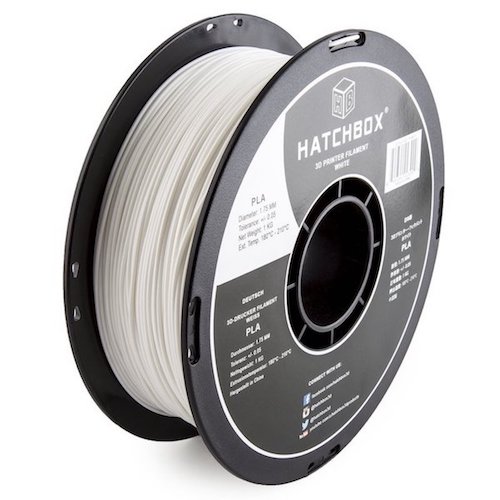
HATCHBOX 3D Printer Filament, 1 kg, 1.75 mm, White
ABS
ABS is as common as PLA, extruding at temperatures between 210-250C. It is more flexible and durable than PLA, though still quite solid. ABS is susceptible to warping due to temperature changes during the printing process, so it should be used with a heated printing plate. It doesn’t smell great when it’s printing, and is not entirely food-safe or environmentally friendly, but is a great alternative to make more durable prints than PLA.
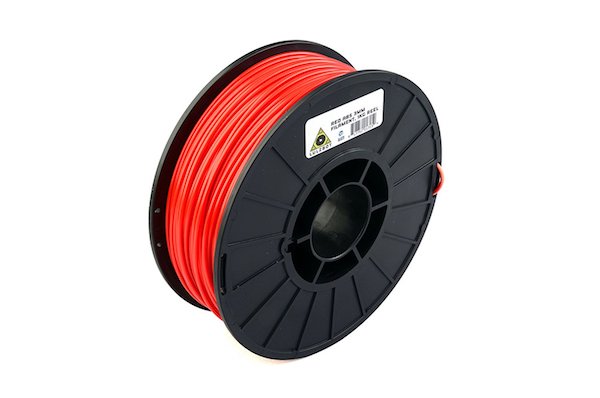
LulzBot ABS 3D Printing Filaments, 1 kg, 3 mm, Red
Nylon
If you need something stronger than PLA or ABS, nylon should do the trick. Nylon is more elastic, can withstand more stress, and is even safe in sunlight. It typically melts at temperatures between 245-250C.
LulzBot Taulman Alloy 910 Nylon, 1 lb, 3 mm, Natural
TPE
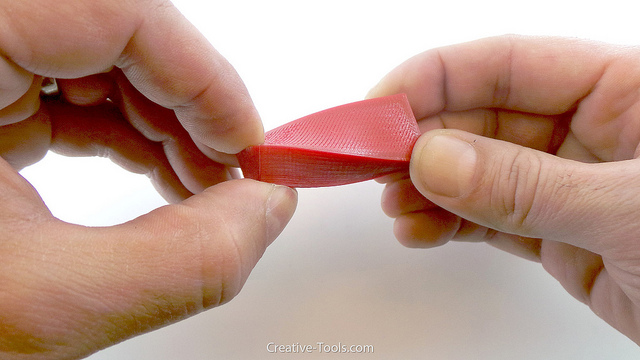
Source: Creative Tools, CC BY 2.0
TPE filaments create a rubbery, flexible, highly elastic finish. Printing at temperatures between 225-235C, this material isn’t the most durable but is great for items like wearables. It also doesn’t require a heated printing bed to produce accurate results.
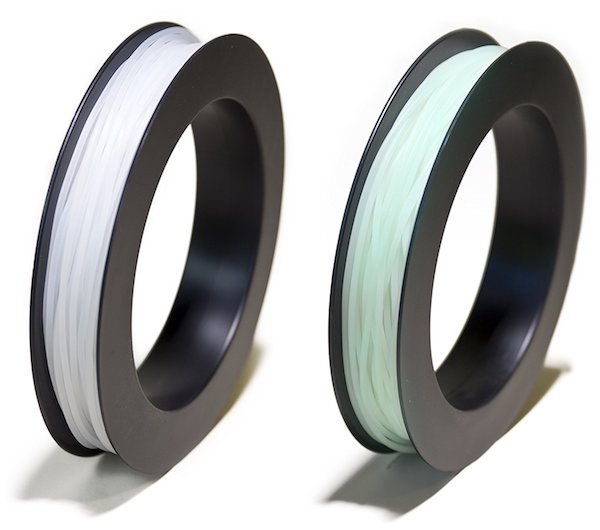
NinjaFlex TPE Filament, 50 g, 175 mm, Water and Neon
PET
PET is strong, relatively flexible, highly durable, and lightweight. It’s a great filament for just about any application and comes in a large variety of colors. Melts at temperatures between 220-250C, and can be printed well without a heated printing bed.
MadeSolid PET+ Filament, 1 lb, 1.75 mm, Blue
HIPS
HIPS is considered a support filament, usually used with dual extruders to provide support for more intricate ABS prints. It’s biodegradable, prints at temperatures between 210-250C, and can be dissolved in Limonene when the print is finish, leaving behind the hardened ABS structure.
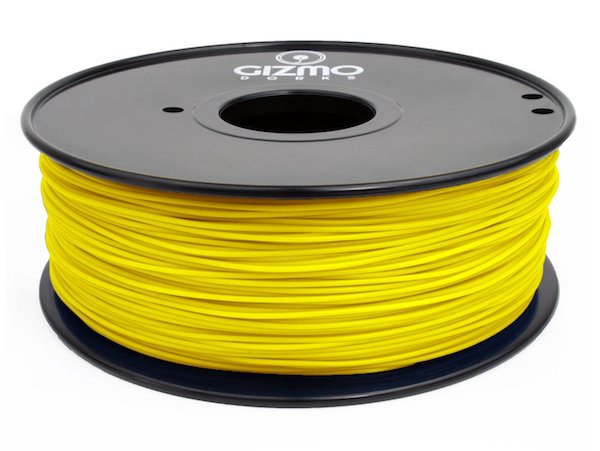 Gizmo Dorks HIPS Filament, 1 kg/2.2 lb, 2.85mm, Yellow
Gizmo Dorks HIPS Filament, 1 kg/2.2 lb, 2.85mm, Yellow
PVA
Unlike HIPS, PVA can be used with both ABS and PLA filaments as a support material. It melts at a much lower temperature, between 190-230C, and doesn’t require a heated printing plate. Even more conveniently, PVA is dissolved in water to reveal your print when the structures are no longer needed.
GP3D PVA 3D Printer Filament, 1 lb/5 kg/1.75 mm, Natural
Buying Quality Filament
Now that you know the basics of each of the most common filament types, be sure to buy quality materials. Purchasing discounted filaments may seem like a good idea, but they commonly have poor gauge consistency, questionable additives, and in general do not produce the quality results as premium filaments.
As always, consider which filament will be best for your upcoming project, be sure that your 3D printer can accommodate that type of filament, and finally, purchase quality filament from a trusted brand.

